Cobalt resources in Europe and the potential for new discoveries
There is considerable interest in Europe in understanding the availability of cobalt from indigenous resources to help the transition to a low-carbon economy.
26/01/2021 By BGS Press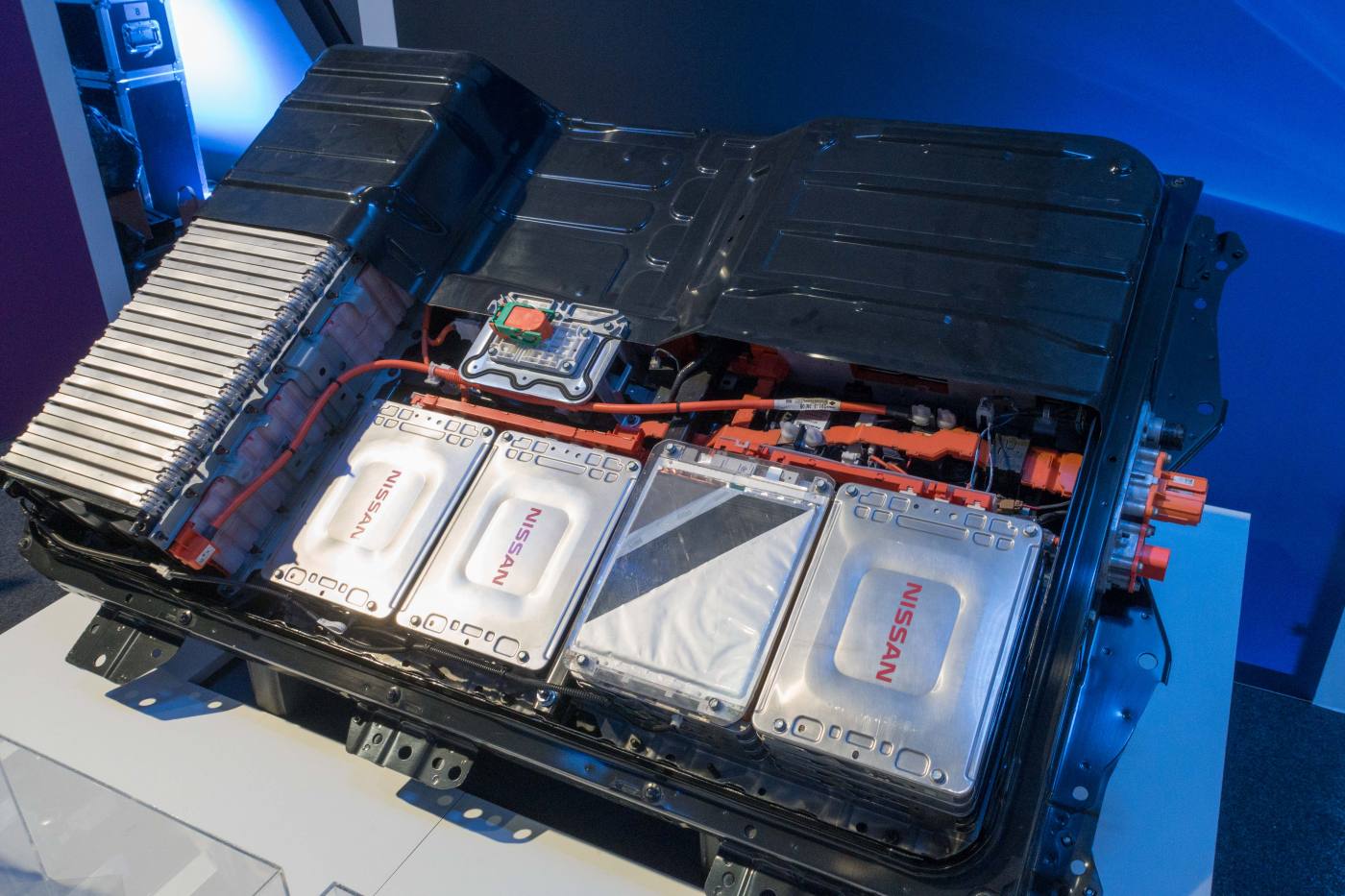
A recent BGS-led study has identified 509 cobalt-bearing deposits and occurrences in 25 countries in Europe.
Global demand for cobalt is increasing rapidly as we transition to a low-carbon economy and work towards net zero. In order to ensure secure and sustainable supplies, there is considerable interest in Europe in understanding the availability of cobalt from indigenous resources.
This new study collates and harmonises cobalt resource data for Europe and assesses it in a global context. It highlights the potential for indigenous supply to meet European demand. It will be of great interest to governments, industry and academia, all of whom are concerned about the long-term security of supply of critical raw materials.
Gus Gunn, MBE, BGS Honorary Research Associate
The study is a collaboration with the geological surveys of Finland, Norway and Sweden, as well as the Greek-based mining company LARCO and Camborne School of Mines, University of Exeter, and is part of a PhD project hosted at the BGS. The study has identified 104 deposits in Europe that are currently being explored for cobalt, of which 79 are located in Finland, Norway and Sweden. In the Balkans and Turkey, cobalt grades and tonnages are known in 27 nickel laterite deposits, with several containing more than 10 000 tonnes of cobalt metal. Only nickel is currently recovered from these deposits, but new processing technologies such as high-pressure acid leaching could enable cobalt recovery in the future.
The data collected in this study has, for the first time, allowed the classification of Europe’s cobalt resources using the United Nations Framework Classification for Resource (UNFC) system. The largest part of the known resources can be classified as ‘non-compliant historic estimates’. These resources have not been estimated by using internationally recognised classification standards and future mining at these localities is of high uncertainty. More geological data and considerable investment will be required to get a more reliable resource estimate and to prove the technical and economic viability of these deposits. Improved mineral governance is required to facilitate access to, and ensure sustainable management of, Europe’s indigenous cobalt resources. Only eight per cent can be classified into commercial projects, where cobalt is currently a by-product of nickel and copper extraction.
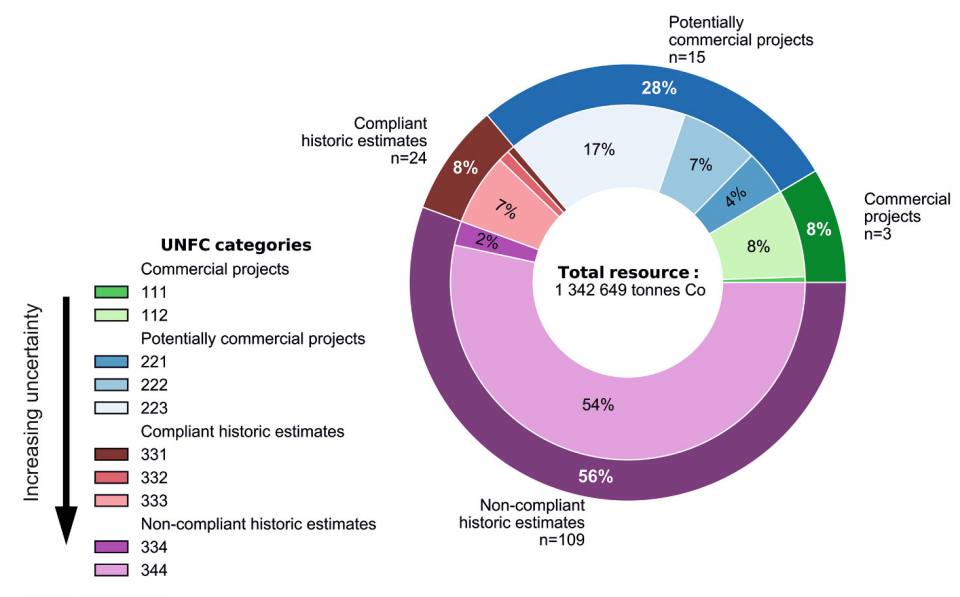
Cobalt resources in Europe classified using the UN Framework Classification (UNFC) categories and classes (n = number of deposits). The largest portions of resource estimates in purple are of high uncertainty and less likely to be extracted. Segments with no label have a share of one percent or less. Source: Cobalt resources in Europe and the potential for new discoveries (CC BY 4.0).
The resource inventory compiled in this study does not fully reflect the cobalt resource potential of Europe because data is unavailable for several countries and reporting standards are difficult to compare. However, given increased research into cobalt metallogeny and extractive metallurgy, together with greater focus on cobalt exploration, there is considerable potential for the identification of additional resources in Europe.
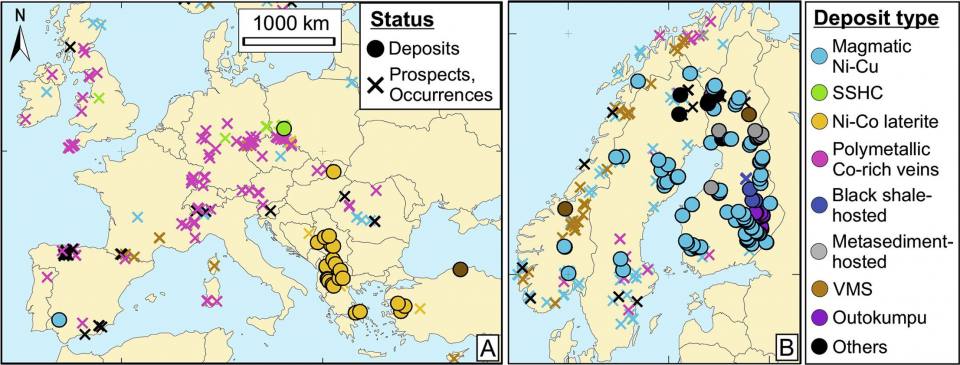
The BGS-led study highlights the presence of substantial cobalt resources distributed widely across Europe in a variety of deposit types. The greatest cobalt resource potential lies in laterite deposits in the Balkans and Turkey and in magmatic and black shale-hosted deposits in Fennoscandia. Further investigations of cobalt in stratiform sediment-hosted Cu-Co (SSHC) deposits of the Kupferschiefer basin and in mainly polymetallic deposits in central and northern Europe could add to the cobalt resource base. Source: Cobalt resources in Europe and the potential for new discoveries (CC BY 4.0).
Cobalt as a component of electric vehicle batteries
We may tend to think that lithium is the major component of lithium-ion batteries (LIBs). However, cobalt generally makes up a greater percentage of the total. Various types of LIBs are currently used in electric vehicles (EVs), but the most important is the lithium nickel-manganese-cobalt oxide (NMC) type.
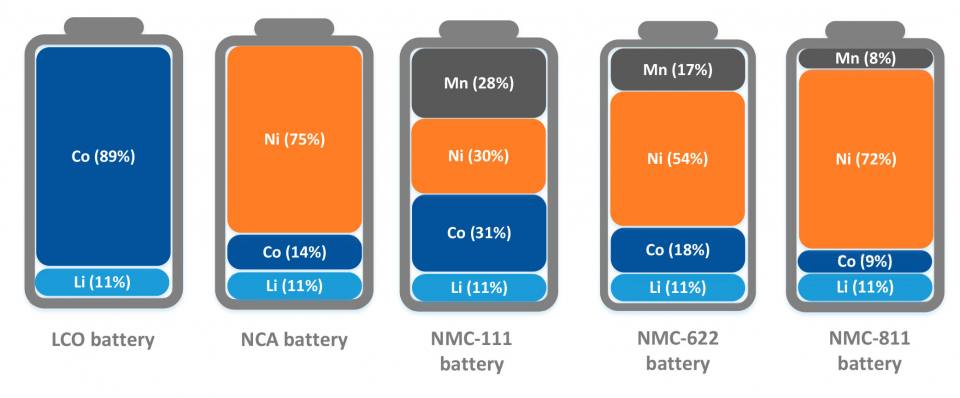
Lithium cobalt oxide (LCO) batteries, which contain about 89 per cent cobalt, are used in mobile phones, laptops and cameras. Lithium nickel-manganese-cobalt oxide (NMC) batteries, which typically contain between 9 and 31 per cent cobalt, are used in e-bikes and electric vehicles. Image: BGS © UKRI (based on figures by Olivetti et al., 2017).
More about battery raw materials.
Cobalt: industrial uses timeline
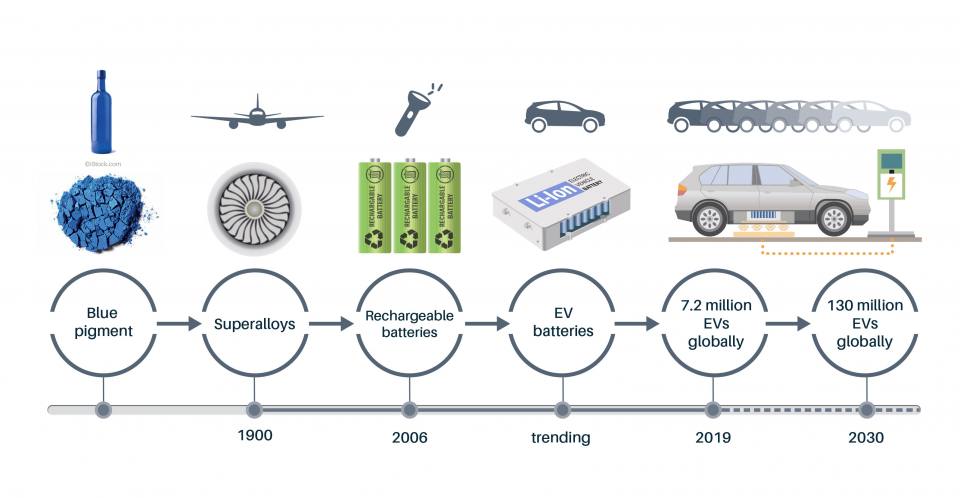
The major use of cobalt has changed over time, from pigments to superalloys and, most recently, to batteries. Some future forecasts predict a global EV fleet of at least 130 million EVs by 2030. Image: BGS © UKRI based on data from the Cobalt Institute 2021, Harper et al. (2012) and IEA 2020.
Cobalt: supply chain to Europe
Most cobalt is recovered as a by-product of copper or nickel extraction. The major cobalt-producing regions are the Democratic Republic of Congo (DRC) and Zambia, with some large deposits also known in Australia, Russia and Canada.
Cobalt can be found in economic concentrations in three principal deposit types:
• stratiform sediment-hosted copper-cobalt deposits
• nickel-cobalt laterite deposits
• magmatic nickel-copper sulfide deposits
Significant concentrations of cobalt may also occur on the sea floor in iron-manganese-rich nodules and cobalt-rich crusts, although to date no cobalt has been commercially extracted from these.
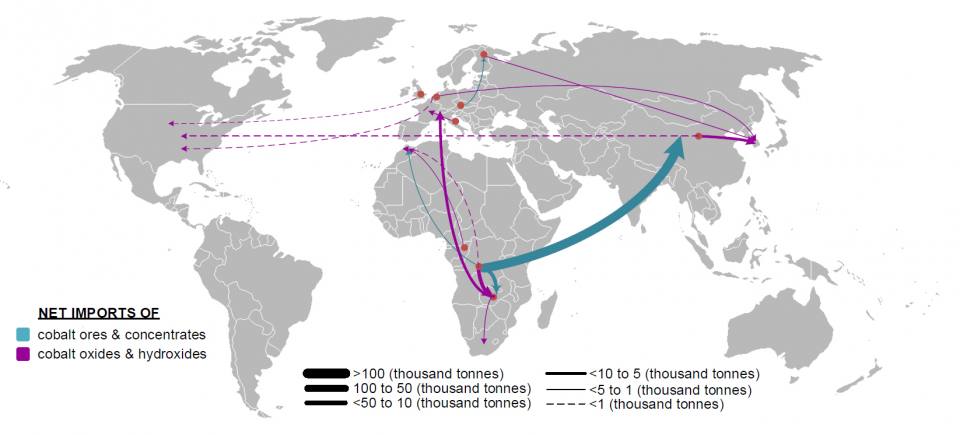
Global flows of cobalt ores and concentrates and cobalt oxides and hydroxides in 2017. Cobalt is mainly extracted from mines in the Democratic Republic of Congo (DRC) and exported to China for further refining. This makes Europe highly dependent on cobalt imports. Image: BGS © UKRI (Petavratzi et al., 2019).
Addressing the UN Sustainable Development Goals (SDGs)
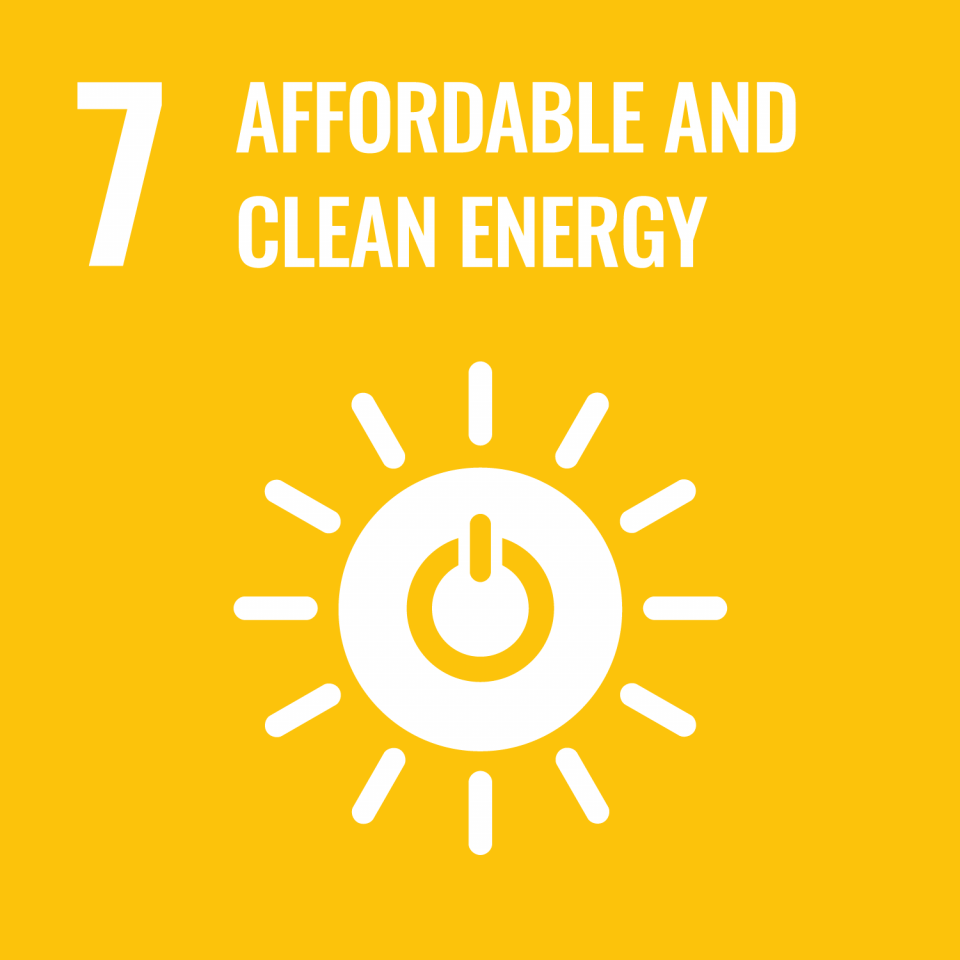
SDG 7: ‘ensure access to affordable, reliable, sustainable and modern energy for all’. The supply of battery raw materials such as cobalt is essential to work towards SDG 7 and is required for sustainable and green road transport with electric vehicles. Cobalt-bearing batteries can also be used for energy storage to balance the variable output from some renewable energy sources.
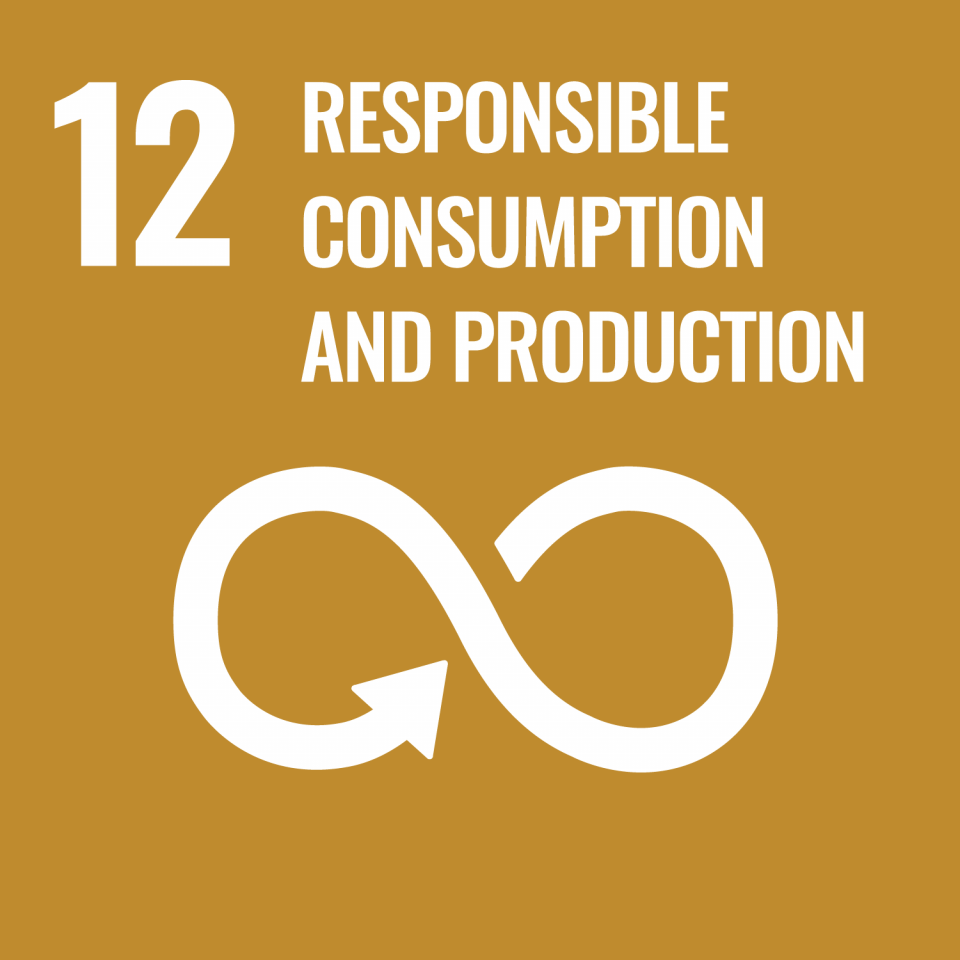
SDG 12: ‘ensure sustainable consumption and production patterns’. Potential cobalt-bearing deposits in Europe can help to supply more ‘responsible’ cobalt from domestic resources and therefore reduce the socio-economic footprint of current major producers.
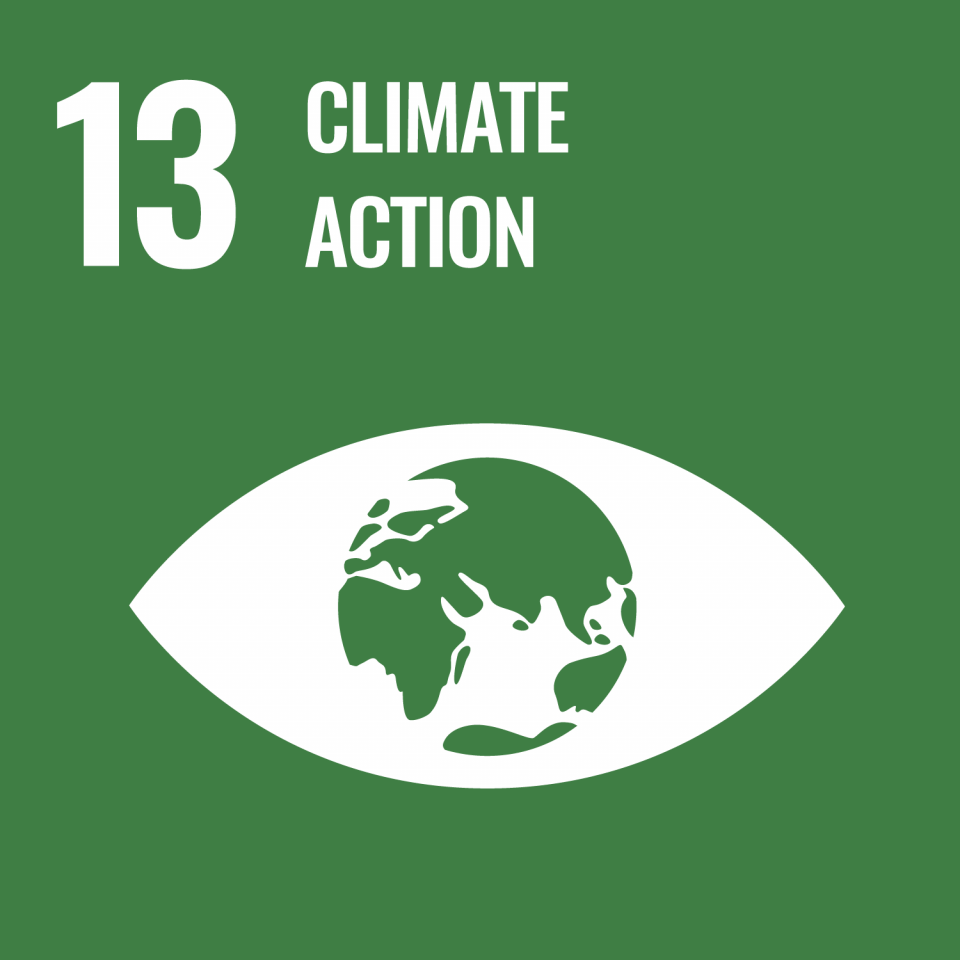
SDG 13: ‘take urgent action to combat climate change and its impacts’. As transport is one of the largest contributors to greenhouse gas emissions, an increase in Europe’s electric mobility is essential to meet our climate goals. This study identifies potential cobalt sources, which are needed for the increasing demand in electric vehicle batteries.
Project partners
- P Eilu and T Törmänen, Geological Survey of Finland (GTK)
- T Bjerkgård and J S Sandstad, Geological Survey of Norway (NGU)
- E Jonsson, Geological Survey of Sweden (SGU) and Uppsala University
- S Kountourelis, GMMSA LARCO, Greece
- F Wall, Camborne School of Mines, University of Exeter
Funders
- The Cobalt Institute
- British Geological Survey
- NERC, GW4+ Doctoral Training Partnership
Cobalt Institute. 2021. History of Cobalt [online]. [Cited 18/01/2021].
Harper, E M, Kavlak G, and Graedel, T E. 2012. Tracking the metal of the goblins: cobalt’s cycle of use. Environmental Science and Technolology, Vol. 46, 1079–1086. doi: 10.1021/es201874e
Horn, S, Gunn, A G, Petavratzi, E, Shaw, R A, Eilu, P, Törmänen, T, Bjerkgård, T, Sandstad, J S, Jonsson, E, Kountourelis, S, and Wall, F. 2020. Cobalt resources in Europe and the potential for new discoveries. Ore Geology Reviews. doi: 10.1016/j.oregeorev.2020.103915
International Energy Agency. 2020. Global EV Outlook 2020: entering the decade of electric drive? [online]. International Energy Agency, Paris. [Cited 18/01/2021].
Olivetti, E A, Ceder, G, Gaustad, G G, and Fu, X. 2017. Lithium-ion battery supply chain considerations: analysis of potential bottlenecks in critical metals. Joule, Vol. 1(2), 229–243. doi: 10.1016/j.joule.2017.08.019.
Petavratzi, E, Gunn, G, and Kresse, C. 2019. Commodity Review: Cobalt. British Geological Survey.
Petavratzi, E, and Gunn, G. 2018. Battery raw materials. British Geological Survey.
This web page is based on the article Cobalt resources in Europe and the potential for new discoveries published in Ore Geology Reviews, by Elsevier on 20 December 2020 under an open access Creative Commons CC BY 4.0 licence. doi: 10.1016/j.oregeorev.2020.103915
Contact
For further information on cobalt and BGS critical raw materials research, please contact Stefan Horn (shorn@bgs.ac.uk), MSc PhD student, critical raw materials team, or follow him on X @StefanH_Co.




